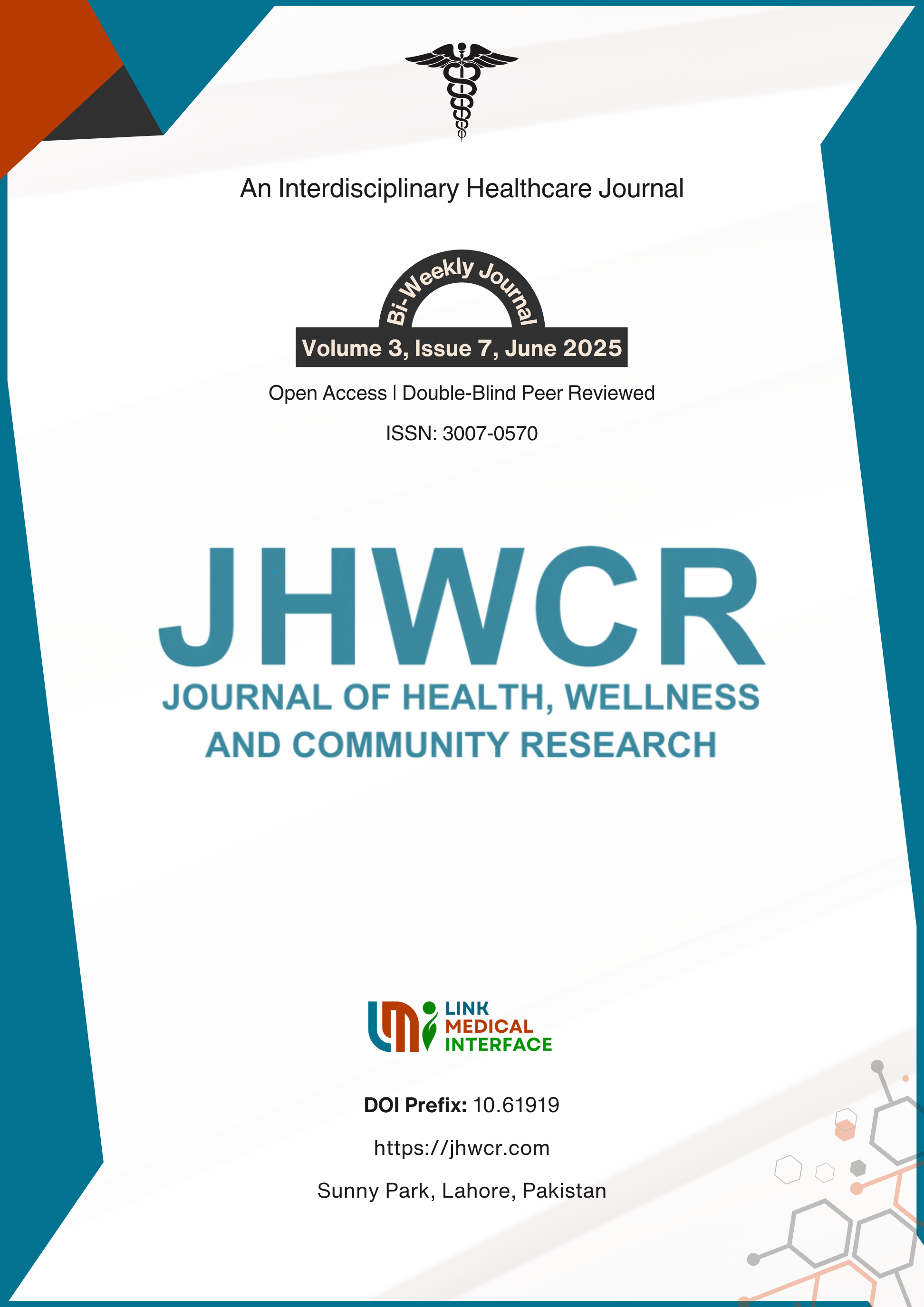Prevalence of Plantar Fasciitis Among Housewives: A Survey-Based Study
DOI:
https://doi.org/10.61919/Keywords:
Plantar Fasciitis, Prevalence, Housewives, Musculoskeletal Disorders, Foot Pain, Urban-Rural Disparity, Exercise Involvement, Footwear, Pain Severity, Heel Spurs, Achilles Tendinopathy, Retrospective Survey, SPSS AnalysisAbstract
Background: Plantar fasciitis is a common condition characterized by pain and inflammation of the plantar fascia, particularly affecting individuals engaged in prolonged standing and walking activities. Housewives represent a significant demographic at risk for this condition due to their extensive household responsibilities. Despite its prevalence, there is limited research focusing specifically on housewives. Objective: The aim of this study was to determine the prevalence of plantar fasciitis among housewives, and to analyze associated demographic and study variables, including age, living area, educational status, onset of pain, exercise involvement, footwear usage, pain severity, and associated diagnoses. Methods: A retrospective descriptive survey design was employed, with a purposive sample of 127 housewives aged 25-60 years. Participants were recruited from clinics, online platforms for podiatry patients, and community centers. Data were collected using a comprehensive, researcher-developed questionnaire that included sections on demographics, pain characteristics, duration of symptoms, impact on daily activities, and treatment methods used. Pain intensity was measured using the Visual Analog Scale (VAS) and the Numerical Rating Scale (NRS). Data were analyzed using SPSS version 25. Descriptive statistics summarized demographic data, pain scores, and the prevalence of specific symptoms. Inferential statistics, including chi-square tests and logistic regression, were used to explore correlations between various treatment methods and outcomes, and to identify potential risk factors for plantar fasciitis. Results: The prevalence of plantar fasciitis among the study population was 4.72%. The most vulnerable age group was 35-44 years, comprising 33.1% of the participants. A majority of the participants were from urban areas (58.3%) and had completed primary education (32.3%). Regarding the foot affected, 44.9% reported issues with their right foot, 34.6% with their left foot, and 20.5% experienced bilateral symptoms. Gradual onset of pain was reported by 74.8% of the participants. Exercise involvement was low, with 78.0% not engaging in any form of exercise. The majority used saddle-type footwear (89.8%). Pain severity was moderate for 59.8% of the participants, severe for 25.2%, and mild for 15.0%. Associated diagnoses included heel spurs in 23.6% and Achilles tendinopathy in 11.8% of the participants. Conclusion: This study highlighted the significant prevalence of plantar fasciitis among housewives, particularly in urban areas and within the 35-44 age group. The findings underscore the need for early diagnosis, preventive measures, and tailored interventions. Promoting physical activity and the use of appropriate footwear could potentially reduce the prevalence and impact of plantar fasciitis in this demographic.
Downloads
Published
Issue
Section
License
Copyright (c) 2023 Maria Mustafa, Rabia Majeed (Author)

This work is licensed under a Creative Commons Attribution 4.0 International License.


